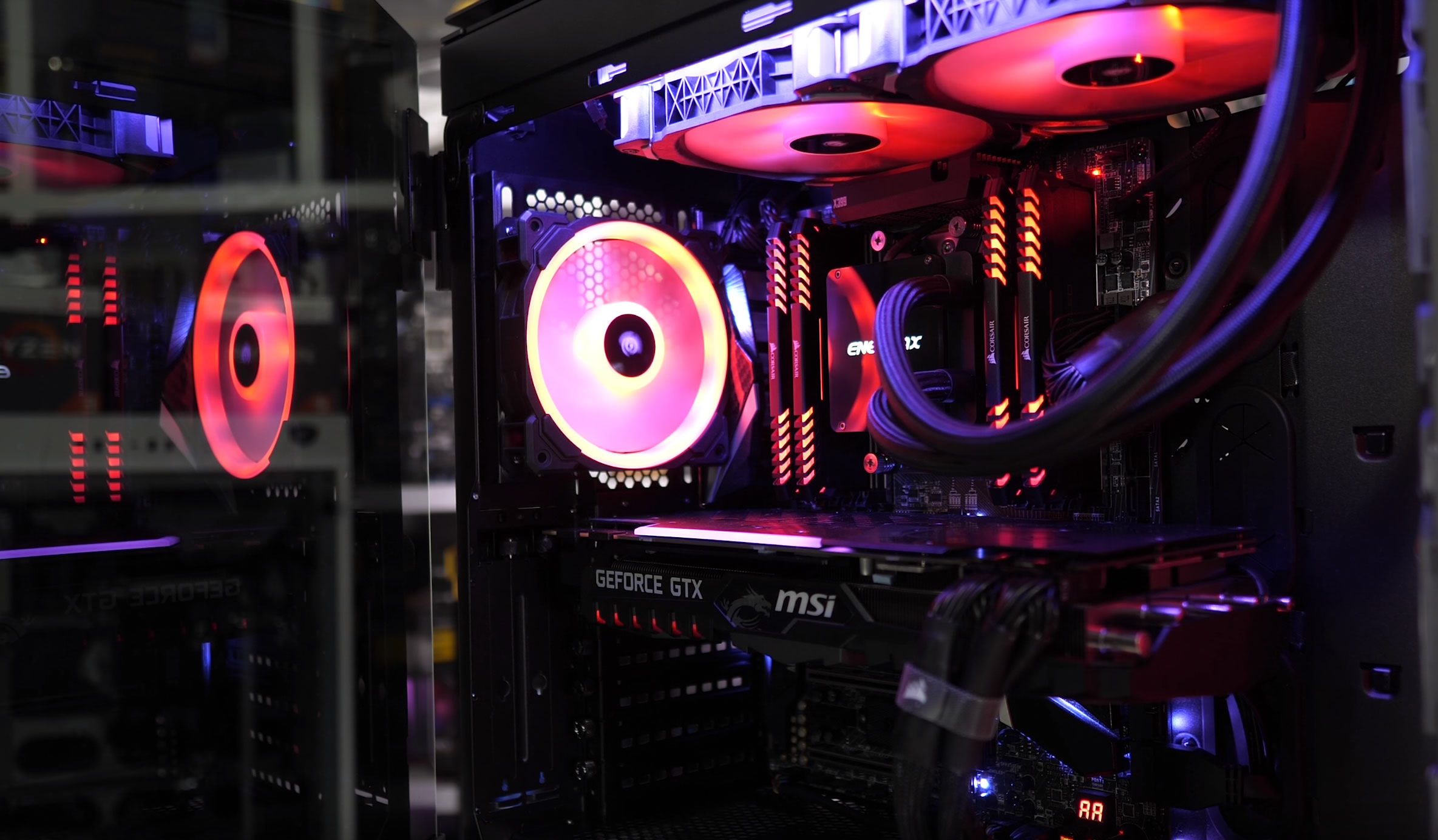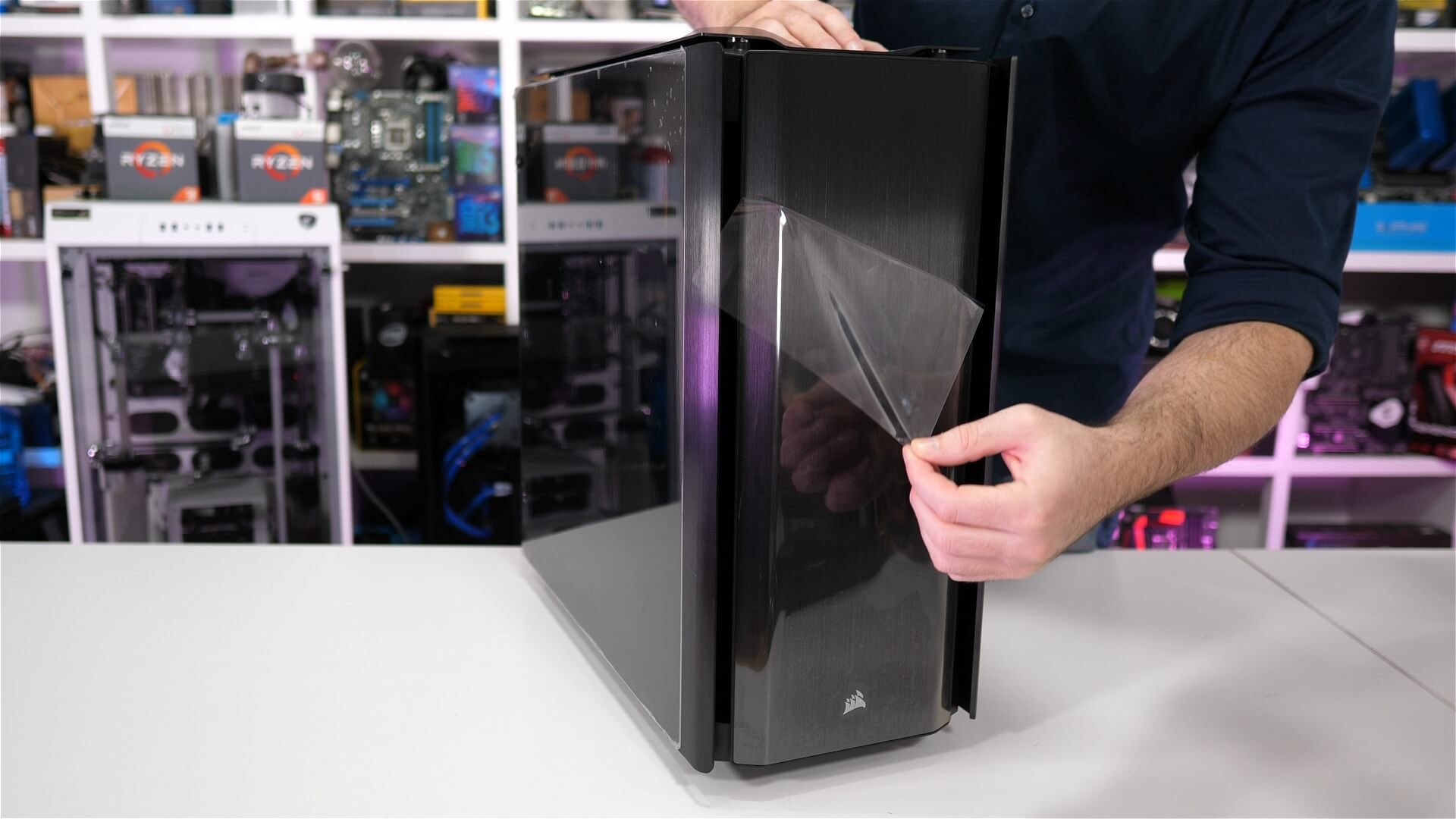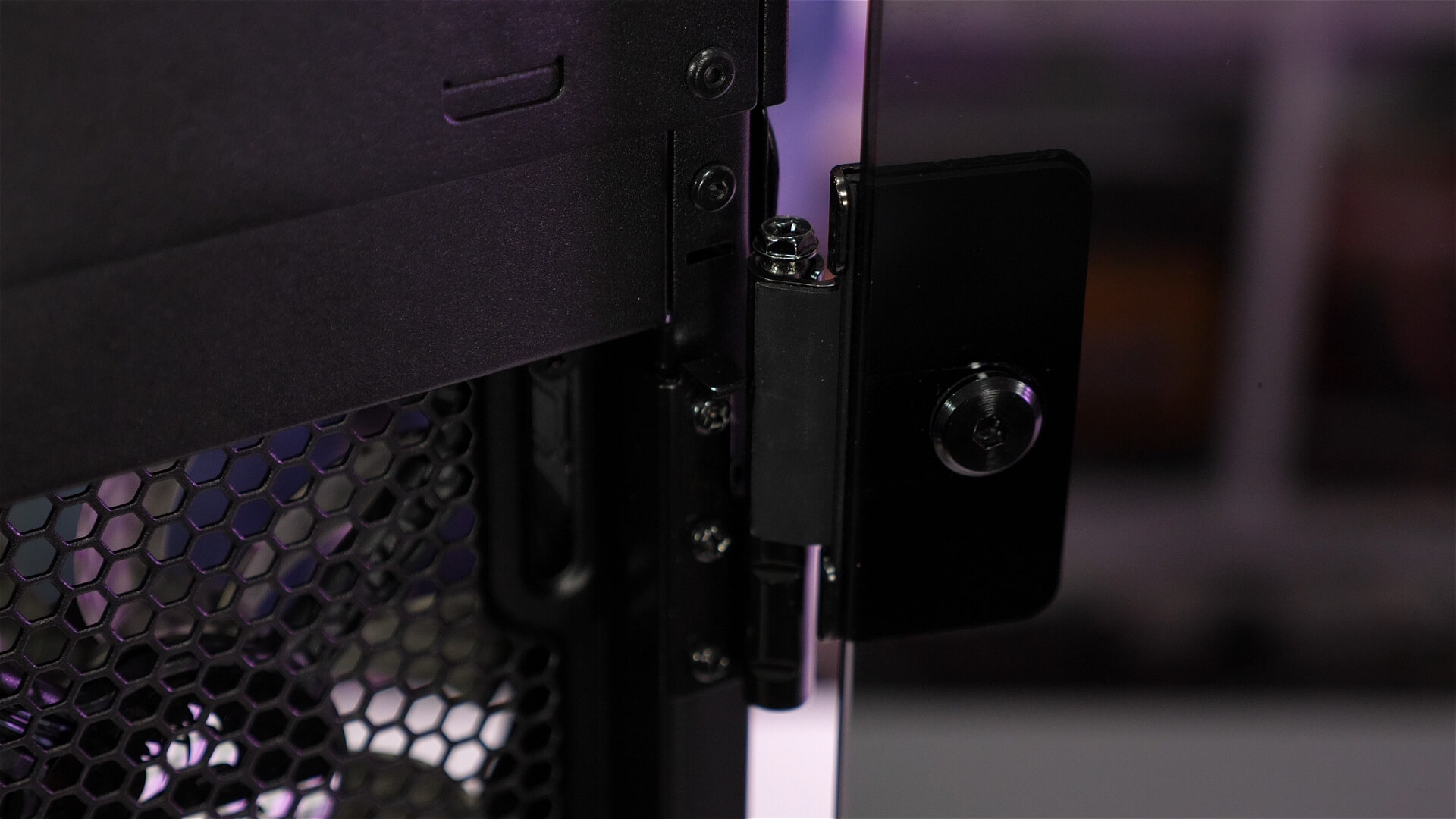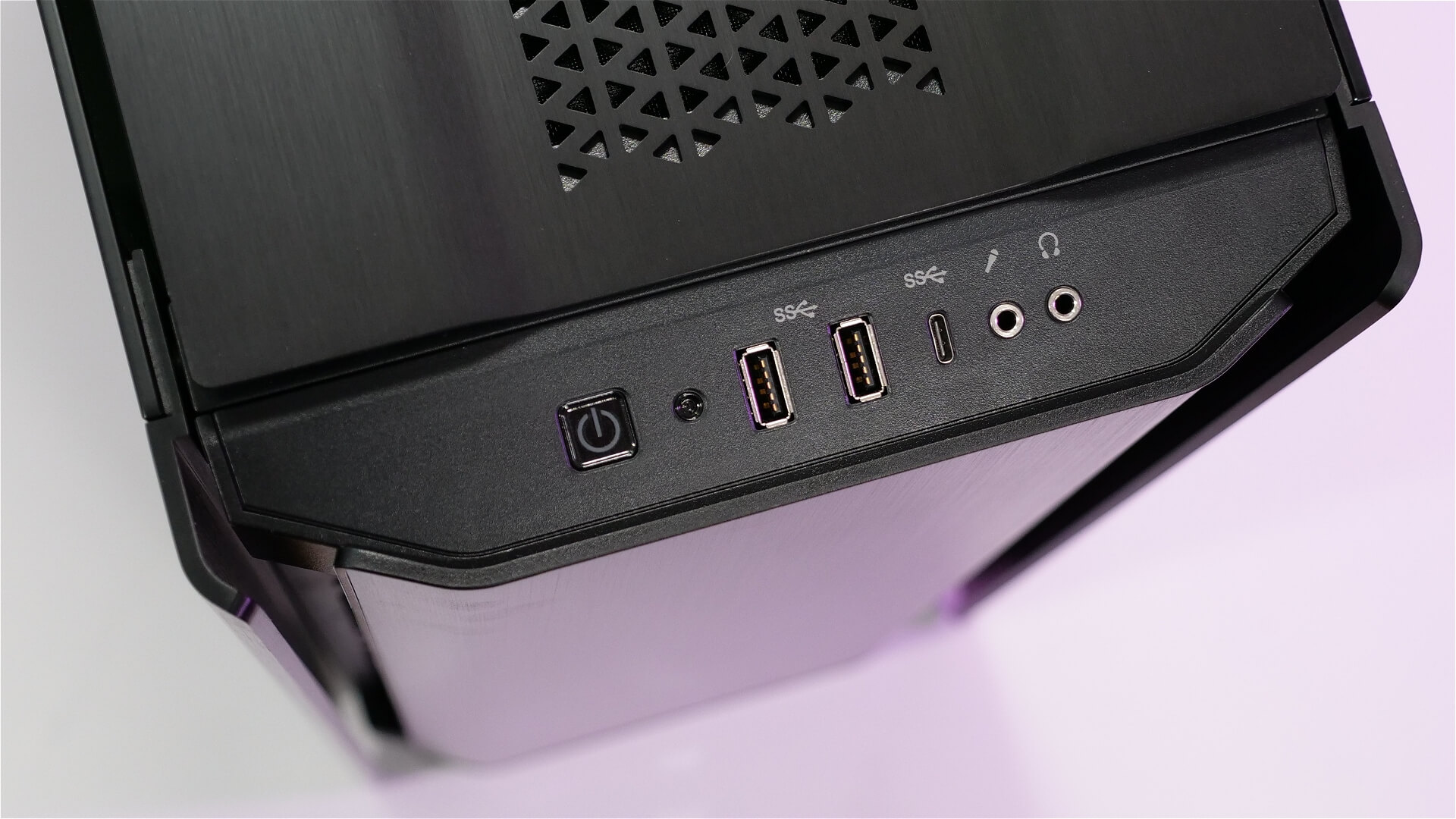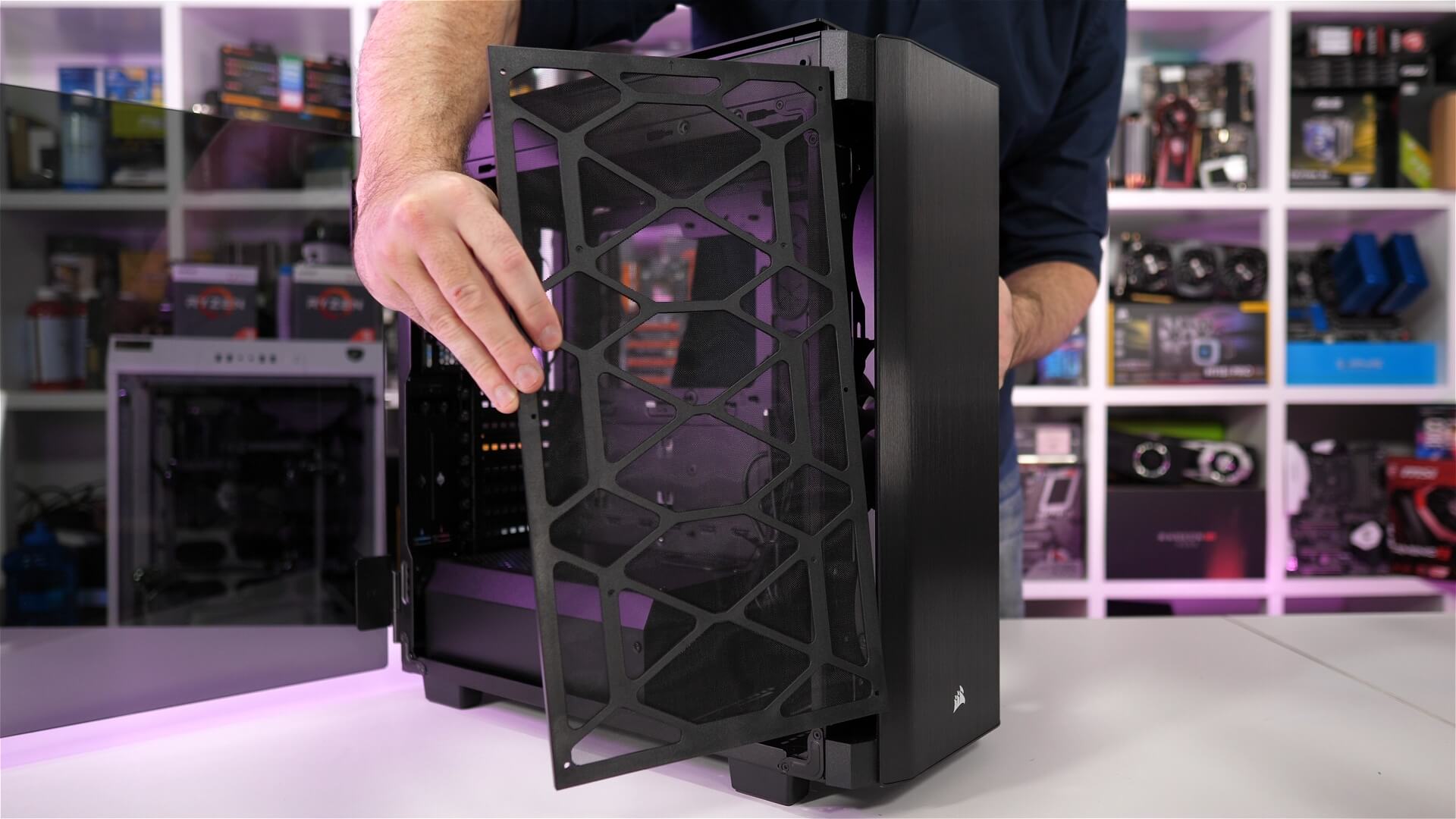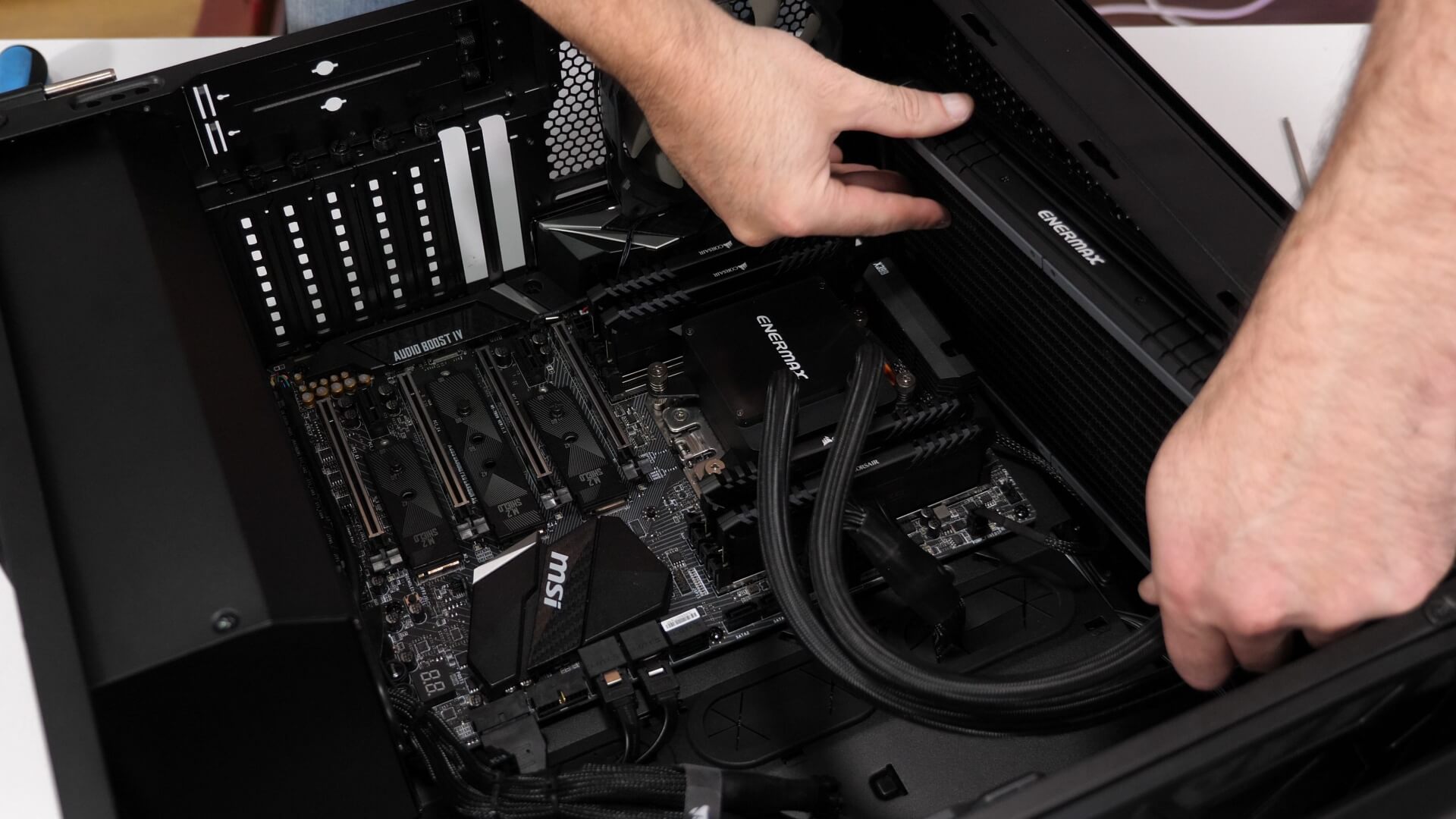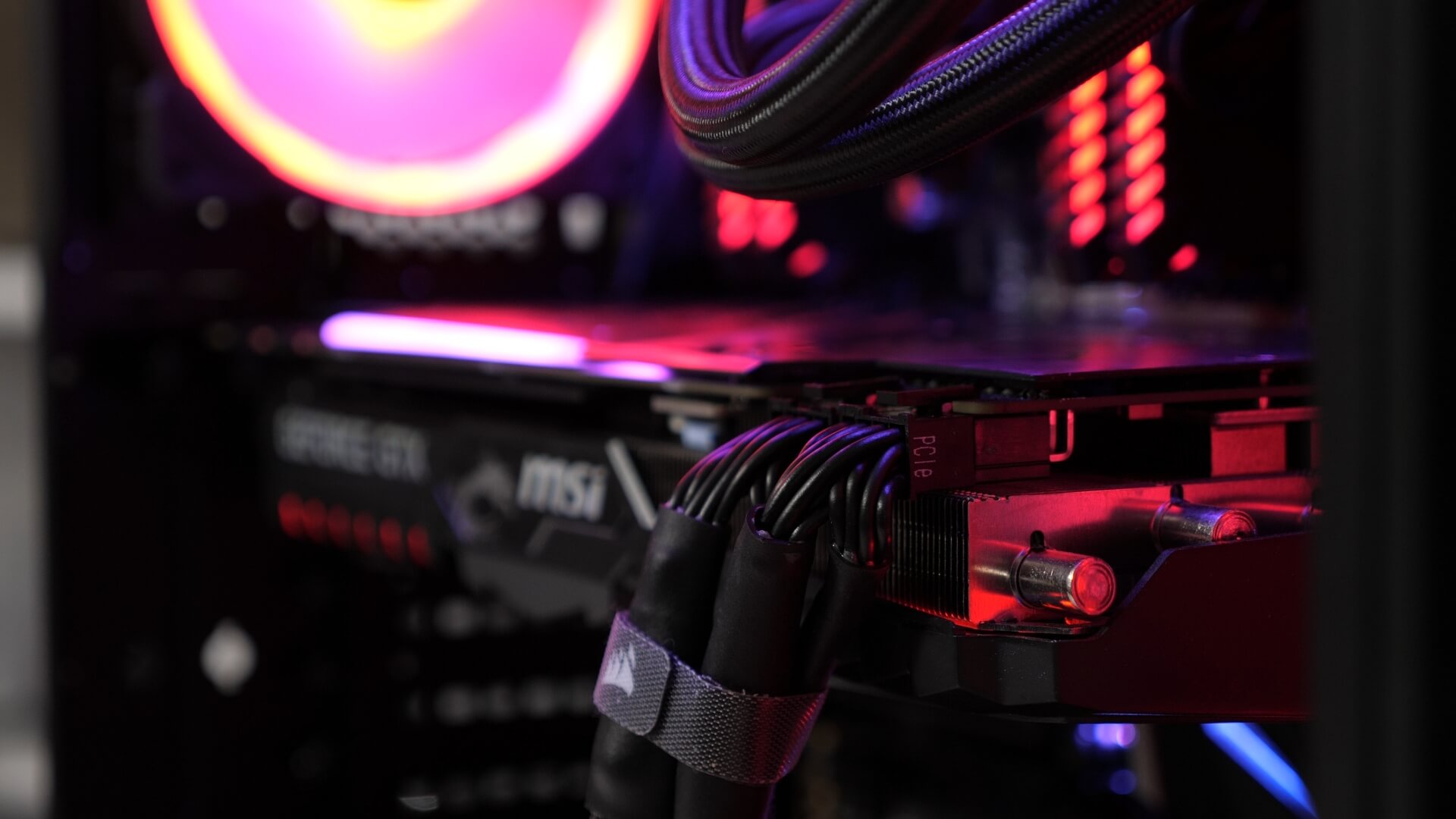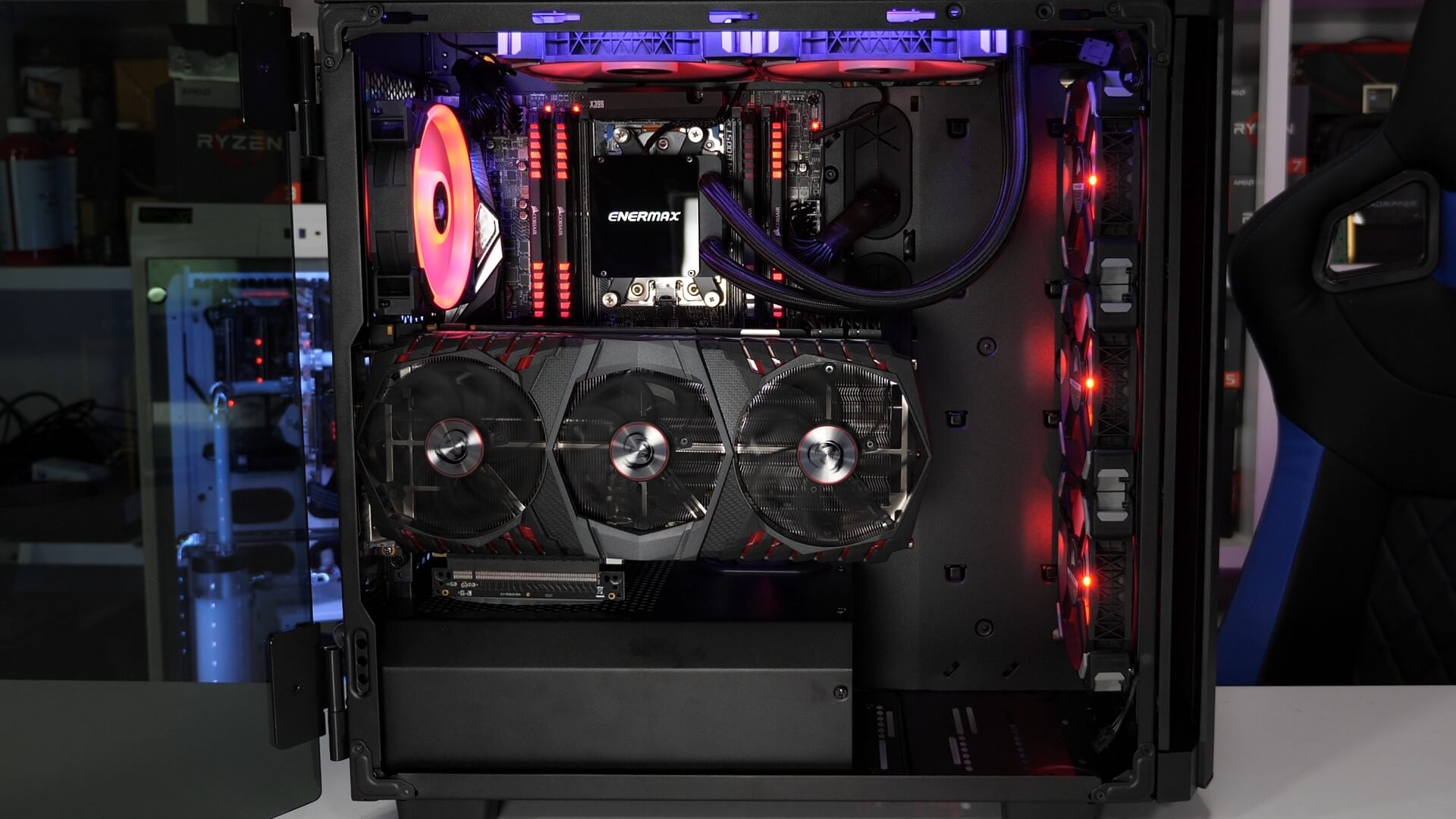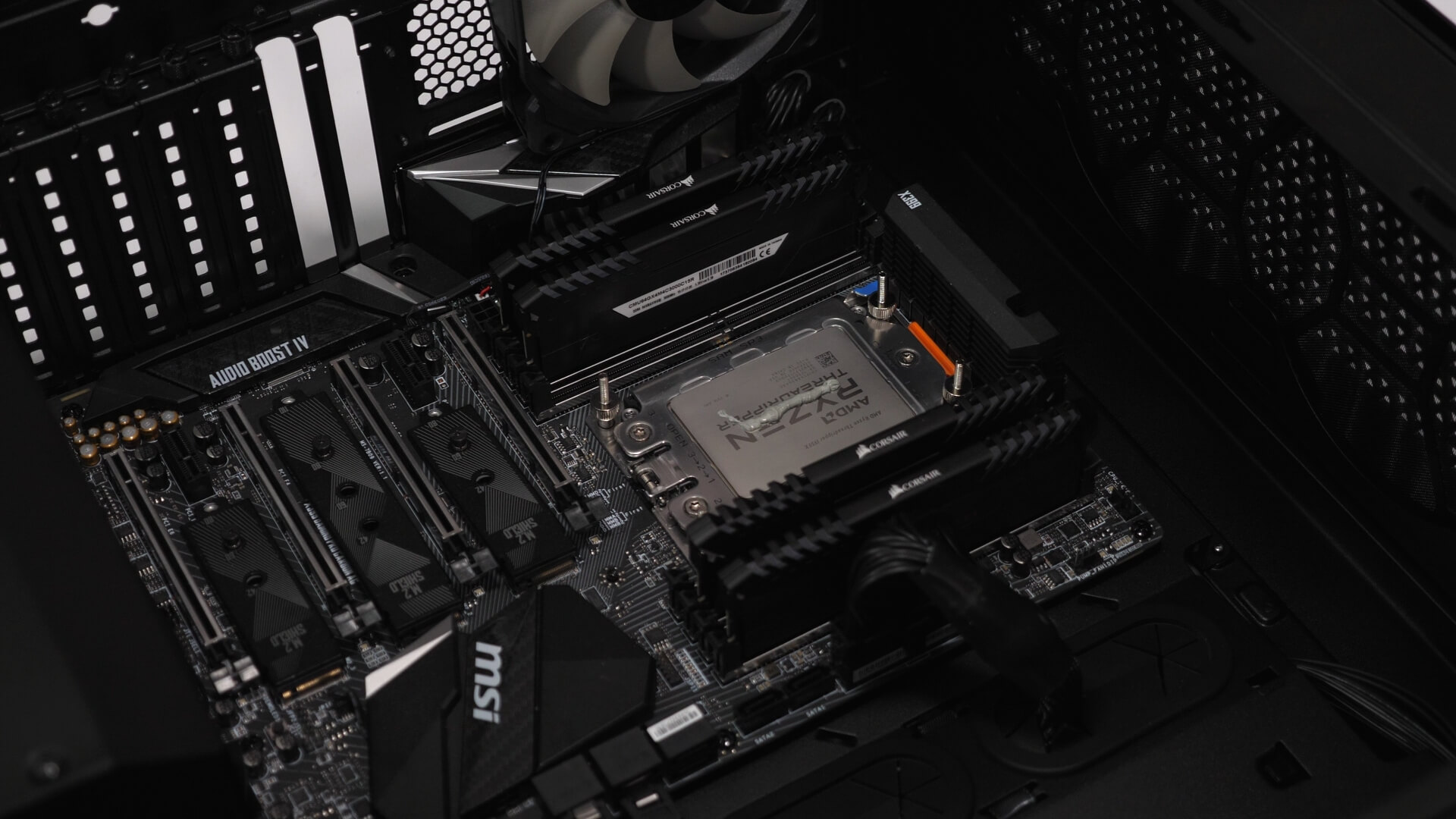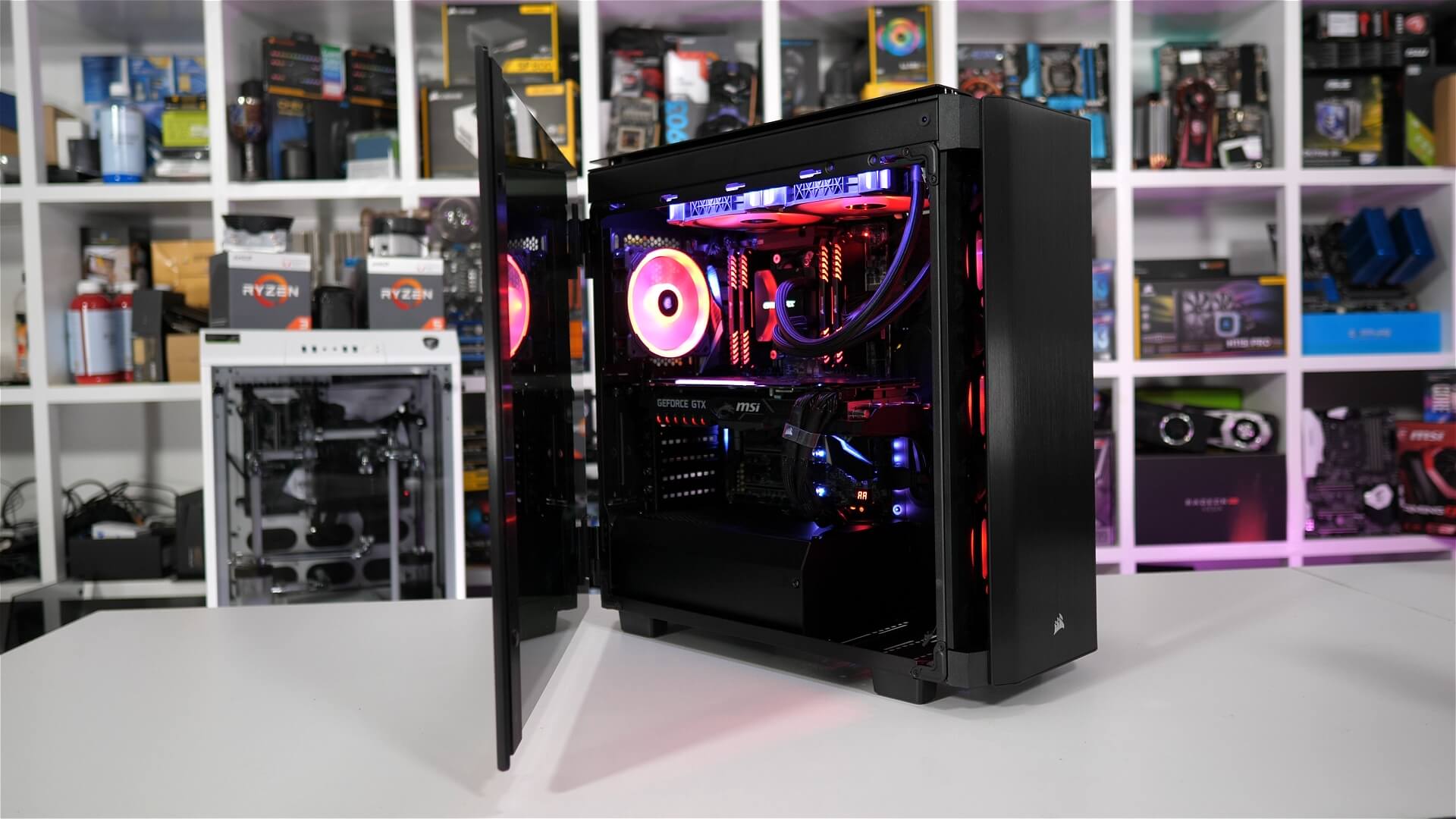Today we'll be taking a break from our typical PC hardware benchmarking sessions to check out a slick new computer case from Corsair. I'm sure many of you are familiar with the company's elite Obsidian series considering models such as the massive 900D and the slightly less massive 750D have been around for some time now and remain popular choices among system builders.
It's been quite a few years since Corsair has refreshed the Obsidian lineup but that changes today with the introduction of its new $150 Obsidian Series 500D.
With the exception of the original 550D, every Obsidian model has followed the same general design cues, but the 500D throws everything out the window in what is a significant departure from the norm for the series. Corsair says the 500D is a state of the art mid-tower designed for enthusiasts, with notable features including smoked tempered glass side doors and a premium aluminum trim. Looks are obviously subjective but I think most will agree that the new 500D is sleek looking yet more adventurous than the traditional Obsidian case.
The case manages to merge clean lines with subtle curves really well and the front panel is a great example of this. At first the front panel appears to be a solid piece of brushed aluminum but it's actually mostly plastic wrapped in a thin sheet of brushed aluminum. I feel like a solid aluminium panel would have worked better here and matched side door panels. Speaking of which, the door panels are mostly smoked tempered glass but at the leading edges are attached to thick aluminium trimmings which not just help make up the front panel but also act as handles – creative and it looks great.
Both the left and right side tempered glass doors panels are hinged for quick and convenient access. It was also great to find when lying the case down to work on that the doors just don't fall off like they have on some other cases I've worked with. The hinge is actually locked into place with a screwed but you can remove this if you want to take the door off entirely.
The panels themselves lock into place using magnets which is really nice, though I did notice a few times when moving the case around they would fly open and smash into whatever was in their way, so be aware of that.
On top of the 500D we find an interesting winged looking type cover that has been constructed entirely from aluminum. It's raised up at the sides to allow airflow while there are also triangular shaped vents down the middle. Up front in the gap between where the top and front panels meet is a smart little I/O panel featuring two USB 3.0 ports, power and reset buttons, two audio jacks and wait for it, a USB 3.1 gen 2 Type-C port, good stuff Corsair.
There isn't anything to exciting going on underneath the case. There's four pretty standard looking plastic feet and a removable dust filter for the PSU. Then finally around the back it's also a very standard affair with seven expansion slots, a PSU in the bottom of course and a rear mounting point for a 120mm fan that we'll look at more closely in a moment.
Before checking out the interior I should also note that there are large removable dust filters in the top and front of the case which are very easy to reach. The top filter is held in place with four magnets while the front filter gets eight. Both can be removed in seconds without the need for tools – a great design by Corsair.
All told, this mid-tower measures 508mm tall, 502mm deep and 233mm wide, and it tips the scales at 10.25kg with no components installed, which is reasonable given its size and the sheer amount of glass used in its design.
Heading inside, we find a compact but separate basement section for the PSU that can be opened up if need be for extra long power supplies. Corsair has also provided grommets in the top of the PSU cover for running power cables to the graphics card for example.
All 2.5" and 3.5" storage slots are found behind the motherboard tray and this space can accommodate two 3.5" drives as well as three 2.5" drives. Corsair has provided removable trays for mounting the drives and it's a tool-less design in the case of the 3.5" drives. For builders who require more storage options, I suspect you'll be able to purchase a drive cage with three trays separately and that will sit adjacent from the PSU shroud.
By default, that location is reserved for liquid cooling gear and you could install a pump and reservoir combo for instance. Corsair has provided mounting holes for all the commonly used kits.
Speaking of liquid cooling, the 500D has room for a up to a 280mm or 360mm radiator in the front, a 120mm rad in the back and a 240mm or 280mm radiator in the top. Corsair has made installing radiators and fans easy by including removable fan trays in the top and front of the case. This lets you mount all the hardware outside of the case.
As you might have guessed, given the radiator support you can install either three 120mm or two 140mm fans in the front and two 120mm or 140mm fans in the top. By default the 500D comes with a 120mm fan pre-installed in the front, the center location and then one in the rear.
When it comes to clearance, the 500D will support GPUs as long as 370mm (that covers all of them), CPU coolers standing 170mm tall (again, pretty much all of them) and PSUs that stretch 225mm long. You'll be hard pressed to find something that doesn't fit in this generously sized mid-tower.
Corsair has also made it possible to not just install full-length graphics cards but you can also take advantage of the new vertical GPU mounting fad that really took off last year. That said, I don't recommend that you take advantage of this feature with an air-cooled graphics card as it simply sits too close to the glass side panel and this will restrict airflow.
Additionally, you'll need to purchase the PCIe riser cable separately and Corsair says this standalone accessory will be available from them soon. These things are never cheap though and good quality shielded versions often cost over $50. It's also worth noting that even good ones will introduce a small amount of added latency so keep that in mind.
Finally, when it comes to cable management, the 500D looks after you well and is a pleasure to build in. Corsair has included their removable cable routing cover which makes it possible to create a build that looks clean from all angles. Making life easier are included velcro straps and cable routing grommets for quick and easy cable routing.
For my test build, I installed the MSI X399 Pro Carbon AC, a standard ATX motherboard supporting the big and bold Threadripper CPUs – and of course, I installed the grand daddy 1950X. The graphics card of choice was the MSI GeForce GTX 1080 Ti Trio and what a beast this thing is. For cooling, I wanted to give the Corsair H150i Pro a whirl but it doesn't support the TR4 socket so I instead tested with the Noctua U14S TR4-SP3 ($80), as well as the Enermax Liqtech 280 TR4 all-in-one liquid cooler( $140).
Although the Noctua U14S stands 165mm tall, it fit with room to spare and temperatures were great when using the stock fan configuration. The CPU ran at 61 degrees under full load and the GTX 1080 Ti Trio never went above 58 degrees when gaming.
Good stuff, although I wanted to really dress the 500D up so I stripped out the stock fans and replaced them with Corsair's flashy high airflow ML series and I installed the Enermax Liqtech 280 at the same time. This meant we now had three 120mm ML fans in the front drawing air in, two 140mm ML fans in the top pushing air out through the Liqtech 280 radiator, and a 120mm ML exhaust fan installed in the rear. What an RGB bonanza this turned out to be.
This configuration dropped the GTX 1080 Ti Trio load temp down to 52 degrees and the Liqtech 280 kept the 1950X at just 58 degrees while maxed out. Both the CPU and GPU were left at their stock settings for these tests. I haven't had time to tinker with overclocking but this is something I'll explore with this system in the future.
To really show off the Obsidian Series 500D and all the glorious PC hardware inside, we suggest installing a few LED light strips. Otherwise, I feel like the 500D does a good job of balancing looks with practicality. It's a sleek case that doesn't sacrifice airflow to achieve its clean looks and its overall build quality is high, as you would expect for an Obsidian series chassis.
Most mid-towers are priced between $75 and $100, so at $150 the 500D is certainly a premium product. You could fault Corsair for not providing any extras, such as LED light strips or even a fan controller, and we also would have liked to see one of these things included given the price, but we're also grateful for the feature that are included. For instance, the case's hinged tempered glass doors are of the highest quality. It's also worth noting that the 750D can often be found selling for $130 (currently $150), despite its $160 MSRP, so chances are that it won't be long before the 500D is a little more competitively priced.
In a nutshell, the 500D is a well built case that's second to none in terms of design and build quality. Again, it's also pricey at $140, though we've come to expect such a premium from Corsair's upper-end products.
score
Pros: Unmatched build quality for a case in this category. Sleek looks courtesy of glass and aluminum. Clearance for virtually all hardware.
Cons: Expensive for a mid-tower chassis at $140 and it doesn't have the longest feature list (you may want extra fans or LED lighting etc.)
